By Ira Katz
March 21, 2025
Last weekend there was a ceremony held in a little park called Potager du Dauphin in my hometown Meudon. The ceremony marked the completion of the restoration of a small Russian orthodox chapel located in the park. I provide here a short background history of the park and the chapel before introducing you to a particularly interesting life associated with this site.
Consider the partial map of Meudon below. The Av. du Chateau leads up to the Terrace de L'Observatoire, the site of the Château de Meudon. Along the avenue is the Potager du Dauphin. The word dauphin translates to dolphin, but referred to the oldest son of the king during the time of The Sun King Louis XIV. A potager is a vegetable garden.
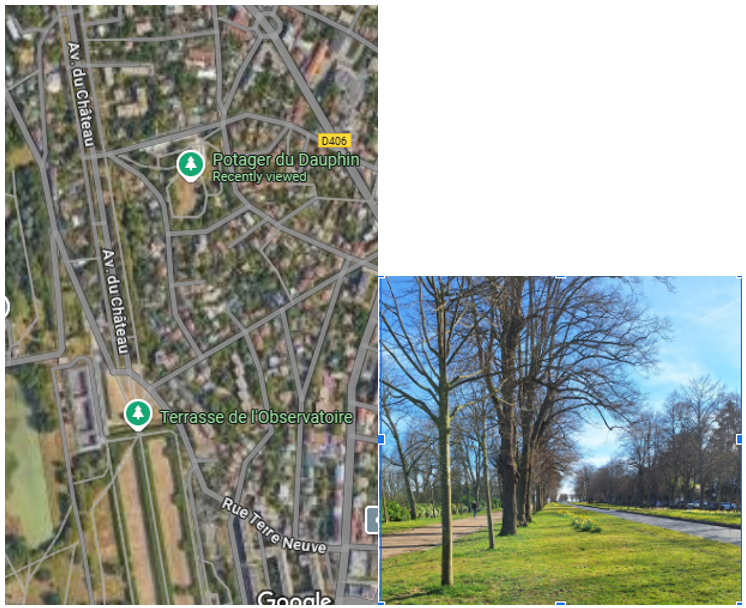
The physical relationship between the Avenue du Chateau, l'Observatoire, and the Potager du Dauphin. The avenue in early spring.

The Grand Dauphin
Louis, Dauphin of France (1 November 1661 - 14 April 1711), commonly known as le Grand Dauphin, was the eldest son and heir apparent of King Louis XIV and his spouse, Maria Theresa of Spain. He became known as the Grand Dauphin after the birth of his own son, Louis, Duke of Burgundy, the Petit Dauphin. He and his son died before his father and thus never became kings. Instead, his grandson became King Louis XV at the death of Louis XIV, and his second son inherited the Spanish throne as Philip V through his grandmother.
The Château de Meudon dates back to the 13th century. It was purchased by Louis XIV for his son; the Grand Dauphin, who lived at the chateau from 1695 until he died there in 1711. You can imagine that as the Grand Dauphin was heir to the throne for a relatively old king, Meudon was an important place; perhaps second only to Versailles. The extensive waterworks and garden were designed by the same landscape architect who planned those in Versailles, André Le Nôtre. In 1709 a new building designed by the renowned architect Jules Hardouin-Mansart was added adjacent to the old chateau called, without inspiration, the Château-Neuf (new chateau).
In the 18th century Madame de Pompadour was the officially designated chief mistress of Louis XV. Only in France could there be an official position of mistress to the king. He built for her the Château de Bellevue that was located along the line of the Ave. du Chateau (through the top of the map above, though virtually nothing remains of it today). Thus, I imagine there were many royal promenades between the chateaux.
In 1795, during the revolutionary period, the old chateau burned to the ground though the cause is believed to be accidental. In 1870 Prussians took this ideal site for artillery to bombard Paris. The Château-Neuf was damaged in the battle. Demolition was considered, but most of it was preserved and became an observatory with an astronomical telescope in 1878. Today the building itself sits unused but on this site is a center for astronomy in France and that is the reason it is called Terrace de l'Observatoire. Richard Wagner wrote the opera The Flying Dutchman while living on the Ave. du Château in 1841. A refugee from revolutionary Russia, the pianist and composer Nicolas Medtner, lived on the avenue for a time in the 1930s.
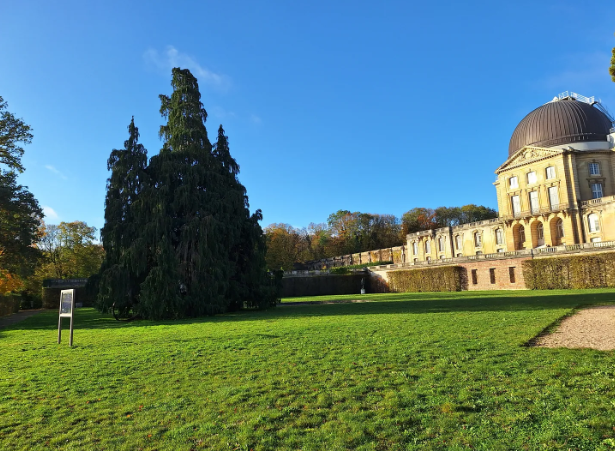
The Château-Neuf looks like it was designed to have a telescope.
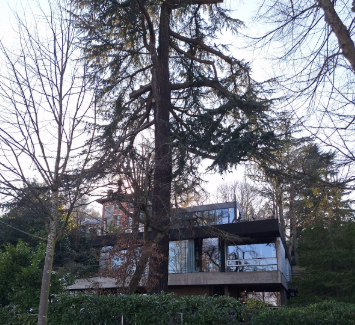
Beautiful modern house with a view of Paris designed by Jerome Rol located on Ave du Château across from the Potager du Dauphin.
During the French Revolution, the Potager du Dauphin was confiscated and sold into private hands. The property was acquired in 1946 by the Society of Jesus, the Jesuits, which founded the Saint-Georges Boarding School to welcome young Russians (Orthodox Christians) in exile. Meudon had been a haven for Russian refugees from the time of the revolution in 1917, thus it was naturally a prime location for this kind of school. Their affiliation with the Russian Orthodox Church was respected, including in the celebration of worship. A Byzantine chapel was created in what was once a greenhouse. With the fall of the USSR and the end of religious persecution, the Saint-Georges boarding school gradually lost its appeal, as young Russians preferred to study directly in Russia rather than in Meudon. This is why the Jesuit Fathers sold this property in 2002 when it was acquired by the city of Meudon. I believe the weekend celebration for the restoration of the chapel and for Russian culture is praiseworthy in the current political environment in Europe.

This lovely 19th century house built by the private owners is now extensively used as a meeting place in Meudon. I received my French citizenship there in 2014.
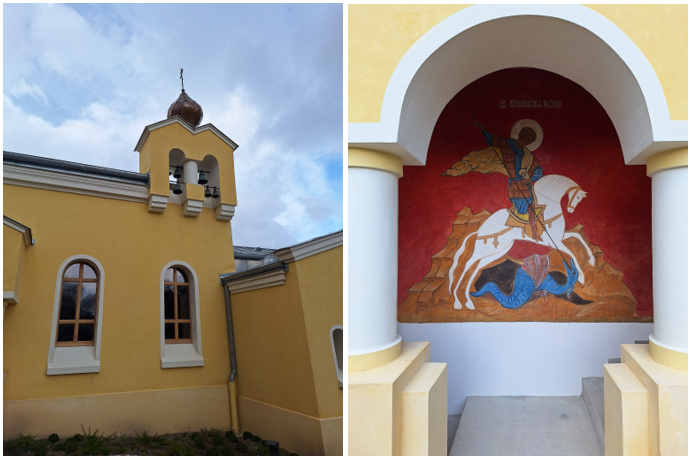
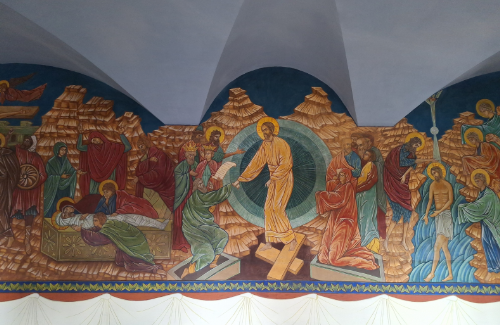
Exterior and interior views of La Chapelle Saint-Georges.
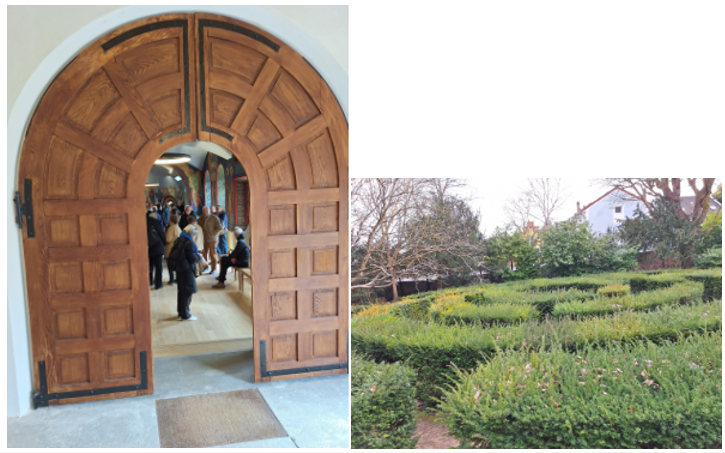
This arched door within a door is magnificent. My daughter loved to play cache-cache, hide and seek, in and around the maze located in the park.
This story of Meudon so intimately intertwined with French history will now take a radical turn to the East, to German Silesia. Egon Sendler was born in Malkwitz (now Małkowice in Poland). His father was the director of the village Catholic school and a member of the Catholic political party Zentrum. His father died of tuberculosis in 1938 so the family lost his income and their housing. They moved to Breslau (now Wrocław in Poland) where he became involved in a clandestine Catholic youth organization. When he completed high school in 1942 he was drafted into the army. Sendler was taken as a prisoner of war by the Soviet army on May 9, 1945; that is, when the war was officially over. He stated honestly to his Soviet capturers that in three years of war he had not killed anyone. He was taken to Russia where he was interred in work camps, essentially slave labor.
He spent several months in a northern region between Finland and Urals. He endured extreme hunger, cold, and difficult working conditions harvesting logs from the forest. In his short memoir he described a particular night (translation by Google and me, with my parenthetical comment).
Once, we had to stay in the forest to help cut the trees. Around three o'clock, when night fell, everyone dug a hole in the soil of the forest that was less frozen, covering the bottom with a good layer of branches; we expanded and covered ourselves with another layer. The snow covered everything and we spent a long night in the warmth. That night, our thoughts, our memories, our hopes came back to us. I'm imbued with the idea that all of this has to make sense. A great joy came over me when a certainty took me: I will come back to help these people (Russians) to find God. I was very surprised by this experience, because this was the first time I had felt this joy.
I find this astounding. He formulated his life's work to help the people who had forced him to sleep in a hole in the ground in the freezing forest.
In 1948 he was released and went back to Germany where he began his studies for the priesthood with the Society of Jesus, the Jesuits. It is interesting to know that his studies included the history of Byzantine art. In fact, he was directed toward the Russian apostolate, for which he was ordained in the Byzantine rite. Among a group of companions, he now worked for the union of the Churches, especially rapprochement with Russian Orthodoxy.
Father Sendler was sent to Meudon in 1959 where he taught at the Jesuit College of Saint-Georges in Meudon for Russian immigrants, that you now know was the Potager du Dauphin. There, he first began to teach icon painting, as he had learned to paint as a child from his mother who was an amateur artist. And it was Sendler (known by his religious name Pére Igor) who painted the icons in the little chapel in the Potager du Dauphin. He became an international expert in the theory and practice of Orthodox icon painting. He wrote several books and maintained an atelier to teach the craft in Meudon until the site was acquired by the city, so then the atelier was moved to Versailles (though there are other art studios still located in Meudon). Part of his mission was to explain Orthodox icons to a western audience. He wrote, an icon is an "image of the invisible." "The West sees it (icons) as a religious image; the Orthodox world, as a reflection of the liturgy." "This is the fundamental difference between a Western image that produces depth of space and the icon that radiates towards the viewer."
Following the phenomena of the Jordan Peterson series of lectures on the Genesis book of the Bible a Calvinist pastor in a rundown section of Sacramento made a YouTube video to express his astonishment that so many would pay to hear a sermon. Paul Vanderklay (PVK) was one of the many online creators I began to follow that became known among themselves as this little corner (TLC) of the internet. PVK's gift is his pastoral presence, his ability for honest, sincere, interest and conversation about meaningful subjects with all manner of random individuals (his randos). He organized his gift with a friend into a protocol for meaningful conversation, thus the Estuary movement was born. His conversation partners have come from all Christian denominations, other religious and spiritual traditions and atheists. PVK has recently coined a new term, the metagelical (see A (Seeker) Managerial Swarm vs (Metagelical) Every Member a Mystic (Protestantish) , here, and here).
I'm tremendously excited about the arrival, the serious arrival of orthodoxy in America now, because I think it has the potential of improving American Christianity. But the, and this is where I get back to this metagelical word, the platforms by which this is going to happen are in some ways similar to the kinds of things that we saw in the mid to late 20th century with respect to evangelicalism and Protestant, but now they're happening with Catholics and Orthodox and even people at the fringes of Christianity.
My interpretation of his thought is that while ecumenism tended to bring interdenominational conversation to the lowest common denominator, the metalgelical conversation is a dialogos (see John Vervaeke), a recognition that at the highest level conversation can bring a better appreciation to all participants of their own traditions.
I think Egon Sendler, a Jesuit priest who was a great exponent of Orthodox culture, was the consummate metagelical.